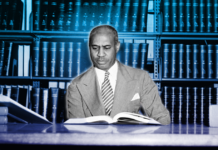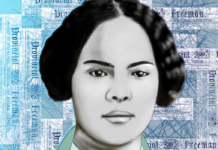In the wake of the George Floyd murder, school boards across the country are saying “flunk the police” and nixing police department contracts.
George Floyd’s brutal Memorial Day murder by Minneapolis Police Department employee Derek Chauvin has pricked the world’s conscience. Mass protests across the globe condemning police brutality against black and brown bodies have emerged since the public lynching of Floyd, whose death was captured on cell phone video by a 17-year old black female bystander.
An important outgrowth has been the decisive action taken by the Minneapolis Public School Board which voted June 2, 2020 unanimously to terminate its contract with the Minnesota Police Department for school resource officers. The district ‘cannot align itself with the Minneapolis police and claim to fight institutional racism,’ said a board member.
In similar fashion, New York City Education advocates have called for the elimination of the New York Police Department from schools and a re-appropriation of funds for school counselors and social workers. “This is the moment to disassociate ourselves from institutional racism and to affirm that Black Lives Matters,” the staffers wrote. “The time has come for our actions to align with our words.”
There are education reform advocates who view public education and criminal justice as twin systems of oppression that have kept black, brown and poor people disadvantaged through social engineering and have long sought to curtail police presence in schools, as it is a driver of mass incarceration — hence the term “school-to-prison pipeline.”
The problems with police presence in schools is a mounting one. The New York Civil Liberties Union Racial Justice Program in 2007 published Criminalizing the Classroom: The Over Policing of New York Public Schools and concluded:
“Statistical analysis shows that all students are not equally likely to bear the brunt of over-policing in New York City schools. The burden falls primarily on the schools with permanent metal detectors, which are attended by the city’s most vulnerable children. The students attending these high schools are disproportionately poor, Black, and Latino compared to citywide averages, and they are more often confronted by police personnel in school for “non-criminal” incidents than their peers citywide. These children receive grossly less per-pupil funding on direct educational services than city averages. Their schools are likely to be large and overcrowded, and to have unusually high suspension and drop-out rates.”
“Cops and No Counselors: How the Lack of Mental Health Staff is Harming Students,” an American Civl Liberties Union study, revealed:
1.7 million students are in schools with police but no counselors
3 million students are in schools with police but no nurses
6 million students are in schools with police but no school psychologists
10 million students are in schools with police but no social workers
14 million students are in schools with police but no counselor, nurse, psychologist, or social worker
Currently, more than 90% of public secondary schools and 85% of primary schools in the United States have sworn law enforcement officers who routinely carry firearms, according to 2015-2016 National Council on Education Statistics; while 18% and 13% respectively wear a body camera.
This vast police presence in the nation’s schools has inured to the detriment of mostly non-white students.
An April 2017 American Civil Liberties Union white paper, “Bullies in Blue: The Origins and Consequences of School Policing” found “the primary role of police in schools is to enforce criminal laws, and virtually every violation of a school rule can be considered a criminal act if viewed through this police-first lens. Though these police are often referred to as “school resource officers,” their legal power and attending actions reveal that this designation only serves to mask that their presence has transformed schools into another site of concentrated policing.”
A trove of articles point to the disciplinary disparities experienced by black and brown youth in public schools, including a report by the U.S. Government Accounting Office (GAO), “Discipline Disparities for Black Students, Boys and Students and Students with Disabilities” which concluded:
“Black students, boys, and students with disabilities were disproportionately disciplined (e.g., suspensions and expulsions) in K-12 public schools, according to GAO’s analysis of Department of Education (Education) national civil rights data for school year 2013-14, the most recent available. These disparities were widespread and persisted regardless of the type of disciplinary action, level of school poverty, or type of public school attended. For example, Black students accounted for 15.5 percent of all public school students, but represented about 39 percent of students suspended from school—an overrepresentation of about 23 percentage points (see figure).”
These early in-school experiences with law enforcement often affect students well into their adult lives, beginning as young as preschool. Perhaps one of the most damning examples of police abuse was witnessed in Orlando, Florida, when a 6 year-old Black girl was handcuffed with zip ties and arrested by a male police officer for what would could only be described as a classroom temper tantrum.
The victimization of Black girls in schools by police is so pervasive, a feature length film, “Push Out: The Overcriminalization of Black Girls in Schools” documents the disturbing trend. Their findings: “Black girls are the only group of girls over represented across the entire continuum of school discipline: corporal punishment, referrals to law enforcement, expulsions, suspensions, arrests and restraints.”
Such abuse of power by police is not new. Dr. James Comer and Dr. Alvin Poussaint wrote in their seminal work “Raising Black Children: Two Leading Psychiatrists confront the educational, social and emotional problems Facing Black Children” (1972) that:
“The problem of racial abuse from people in authority is a greater problem than most of us realize. Authority figures – political figures, policy, public service workers – should provide us with protection and opportunities. Their lack of fairness creates much of the rage, anger, and ambivalence we often feel toward our country” (p. 240)
While law enforcement officers are sworn to protect and serve their fellow citizens, the current protests illuminate how the most vulnerable are often those who suffer most at the hands of the criminal justice system, often beginning in public schools.
George Floyd’s surviving daughter, also a 6-year-old, when interviewed said “My Daddy changed the world.” His murder certainly has and if it serves to help dismantle the school-to- prison pipeline, she may well be right. This would be a step toward making America better. As for ‘great’ we still have quite a distance ahead of us to travel until Black Lives Matter.
__________
This article was first posted on ctrforeduopp.org










